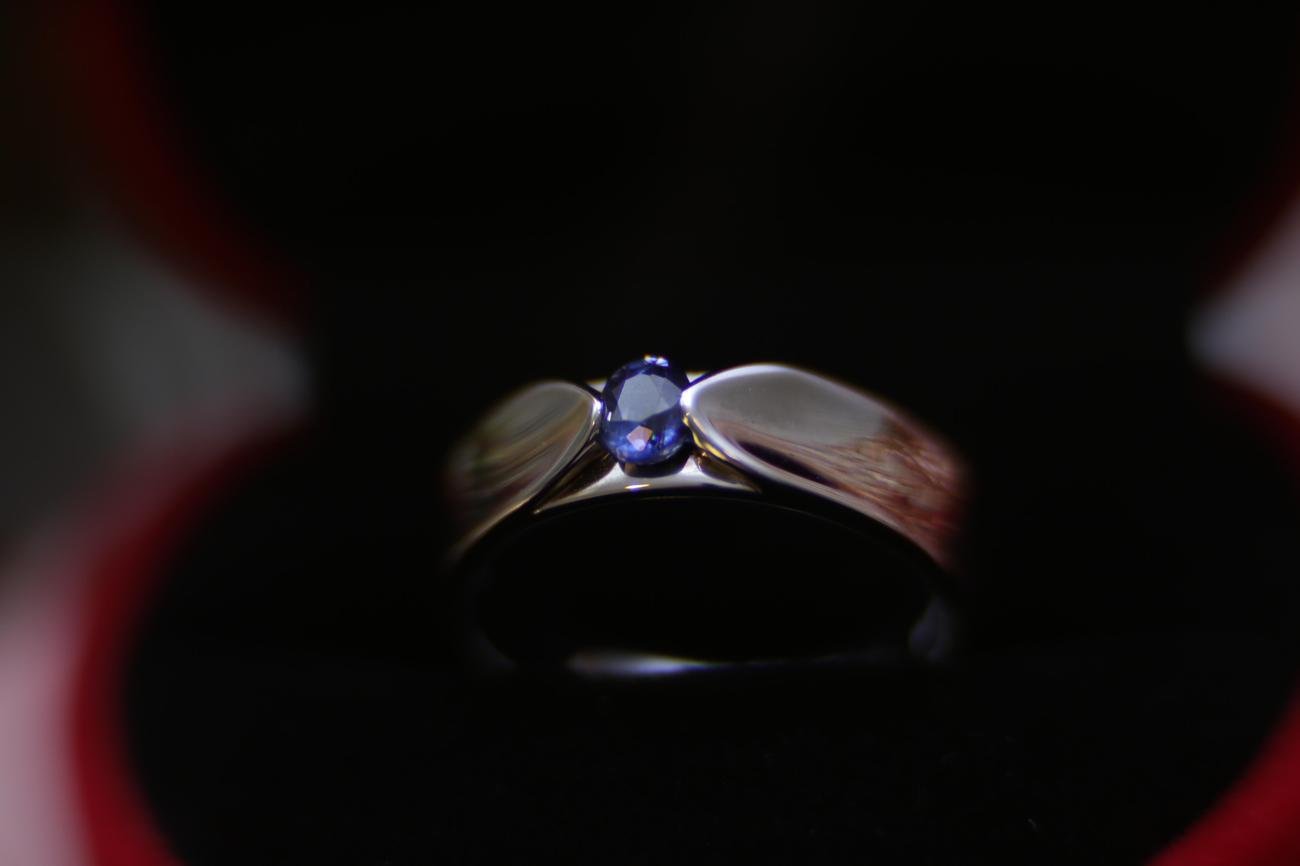Embark on a mesmerizing journey through time as we delve into the enchanting world of sapphires – those sparkling gems that have captivated our imagination for centuries. Brace yourself for a riveting exploration of the historical significance of these radiant stones, as we uncover their fascinating origins, unravel their intricate cultural symbolism, and discover the profound impact they have left on civilizations throughout history. From the majestic empires of the past to the mythical tales that have withstood the test of time, prepare to be spellbound by the hidden stories behind the mesmerizing shades of sapphires.

The Historical Significance of Sapphires
Sapphires: these mesmerizing gemstones hold within them the captivating stories of centuries past, their significance embedded in ancient civilizations and cherished traditions. As an experienced historian with a passion for gems and jewelry, I am eager to explore the historical significance of sapphires, tracing their origins, unearthing their cultural symbolism, and analyzing their impact throughout history.
Origins and Cultural Symbolism
The journey of sapphires begins with their earthly origins, as these precious blue gems have been treasured for their spiritual and protective powers. The Greeks sought guidance from the oracle while adorned with sapphires, while Buddhists believed that these gemstones brought them closer to spiritual enlightenment. Even in Hindu worship, sapphires held a significant role.
Throughout history, sapphires have been associated with a myriad of cultures, and their symbolism extended far beyond their captivating beauty. As I delve deeper into their historical significance, the tales of sapphires revealing themselves as protectors and providers of spiritual enlightenment come to light.
Sapphires: A Shield of Protection
In the realm of early Christianity, sapphires adorned ecclesiastical rings worn by kings, acting as a protective shield against harm. It was believed that these gemstones held the power to ward off envy and protect the wearer from malicious intent.
The allure of sapphires, enveloped in tales of protection and safety, stretched far and wide, as ancient civilizations sought solace in the calm blue hues that resonated powerfully within these precious stones.
Floating Heavens and Nobility
Delving deeper into the Persian Empire, a fascinating belief emerges, portraying sapphires as representations of the heavens. They believed that the entire earth rested upon a giant sapphire, a testament to the gem’s celestial beauty and symbolic weight.
In various cultures, sapphires have been revered for their striking blue color, which symbolizes nobility, truth, sincerity, and faithfulness. The royal courts were bedecked with these precious stones, adorning the robes of kings and clergy members, bestowing upon them an air of regality and romantic allure.
The Harmonizing Power of Sapphires
An enchanting quality inherent within sapphires lies in their ability to harmonize relationships, bringing peace and tranquility. Whether it was their use in social gatherings to put people at ease or their reputation for banishing fraud, sapphires have stood the test of time with their symbolic power.
Beyond their mesmerizing presence in social spheres, sapphires played a notable role in legal matters. These gemstones were sought after by individuals who believed in their ability to protect the innocent. The captivating allure of sapphires extended far beyond their mere physical beauty.
Versatility and Legacy
From adorning jewelry, tools, and religious artifacts to being ground into powder for use as pigments in artwork, the versatility of sapphires is astounding.
Their elegant beauty has been captured in jewelry, whether as eye-catching beads or enchanting pendants. But the legacy of sapphires extends even beyond the realms of aesthetics, as they found themselves intertwined with various aspects of human history.
The Tapestry of Sapphire Histories
The historical significance of sapphires weaves a beautiful tapestry, intricately entwined with the narratives of ancient civilizations, traditions, and legends. Embracing their spiritual and protective powers, sapphires have left an indelible mark on the human experience, symbolizing nobility, truth, and harmony. Their timeless allure continues to captivate hearts and minds, carrying with it the echoes of centuries past and the promise of a vibrant future.
Now, let’s delve further into the cultural and historical impact of sapphires with a visual representation. Below is a table that highlights key aspects of sapphires throughout history.
| Civilization | Significance of Sapphires |
|---|---|
| Greeks | Seeking guidance from the oracle |
| Buddhists | Spiritual enlightenment |
| Hindus | Worship purposes |
| Christians | Ecclesiastical rings for protection |
| Persians | Representation of the heavens |
As we explore the impact of sapphires across civilizations, their historical significance and cultural symbolism come to life, painting a vivid picture of an ancient gemstone that has stood the test of time.
In conclusion, sapphires have played a prominent role in the annals of history, captivating hearts and minds with their spiritual and protective powers. The blue hues of sapphires symbolize nobility, truth, and faithfulness, adorning royalty and bringing harmony to relationships. From the oracle-seeking Greeks to the protective rings of early Christian kings, the enchanting significance of sapphires stretches far and wide, leaving an indelible mark on the human experience.
Sapphire History
Take a journey through time and uncover the captivating saga of sapphires. Delve into the rich depths of their origins, tracing their mystical allure back centuries. From their fascinating ancient legends to their exquisite presence in the modern world, sapphires have been cherished for their mesmerizing beauty and symbolic significance. Embark on this enchanting exploration with us, and discover how sapphires have left an indelible mark in history.
Click here to uncover the intriguing tale of Sapphire History

FAQ
Question 1:
What are some of the spiritual and protective powers associated with sapphires?
Answer 1:
Sapphires have been historically cherished for their spiritual and protective properties. Greeks sought guidance from the oracle by wearing sapphires, while Buddhists believed sapphires brought spiritual enlightenment. Hindus used sapphires during worship, and early Christian kings used these precious gems in ecclesiastical rings for protection.
Question 2:
What cultural symbolism are sapphires associated with?
Answer 2:
Sapphires hold significant cultural symbolism in various civilizations. The Persians believed sapphires represented the heavens, and Greeks believed wearing sapphires protected against envy and harm. The blue color of sapphires symbolizes nobility, truth, sincerity, and faithfulness. Royalty and clergy members have decorated their robes with sapphires for centuries.
Question 3:
How have sapphires been used in different cultures?
Answer 3:
Sapphires have been utilized in numerous ways across different cultures throughout history. They have been used in jewelry, including as beads and pendants, as well as in tools and religious artifacts. Ground into powder, sapphires have been used as a pigment in artwork. The gemstone has also been employed in legal matters, particularly for innocent individuals.
Question 4:
What is the significance of sapphires in relationships and social engagements?
Answer 4:
Sapphires have been valued for their symbolic power to harmonize relationships, bring peace, and put people at ease in social engagements. These precious blue gems have been associated with banishing fraud and have been considered a symbol of sincerity and faithfulness.
Question 5:
How have sapphires been used historically in the field of art?
Answer 5:
Sapphires have not only been admired for their beauty but have also played a role in the field of art. They have been ground into a powder for use as a pigment, adding a touch of vibrancy and richness to various artworks throughout history.
- Carteret County Register of Deeds: Your Guide to Land Records & Vital Documents in Beaufort, NC - November 22, 2024
- Access DuPage County Property Records Online: A Comprehensive Guide - November 22, 2024
- Comal County Judicial Records: A Comprehensive Guide (2024) - November 22, 2024















